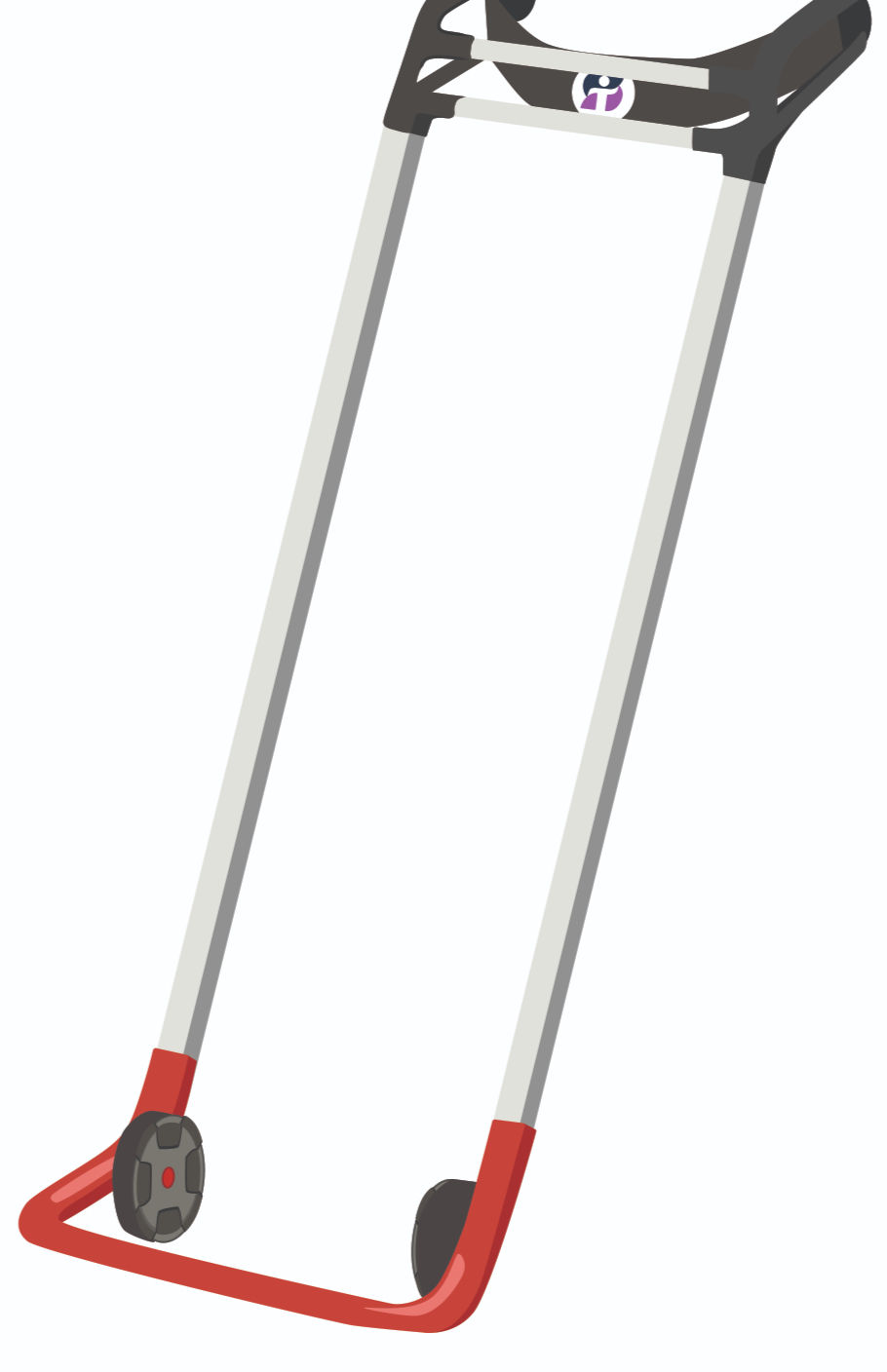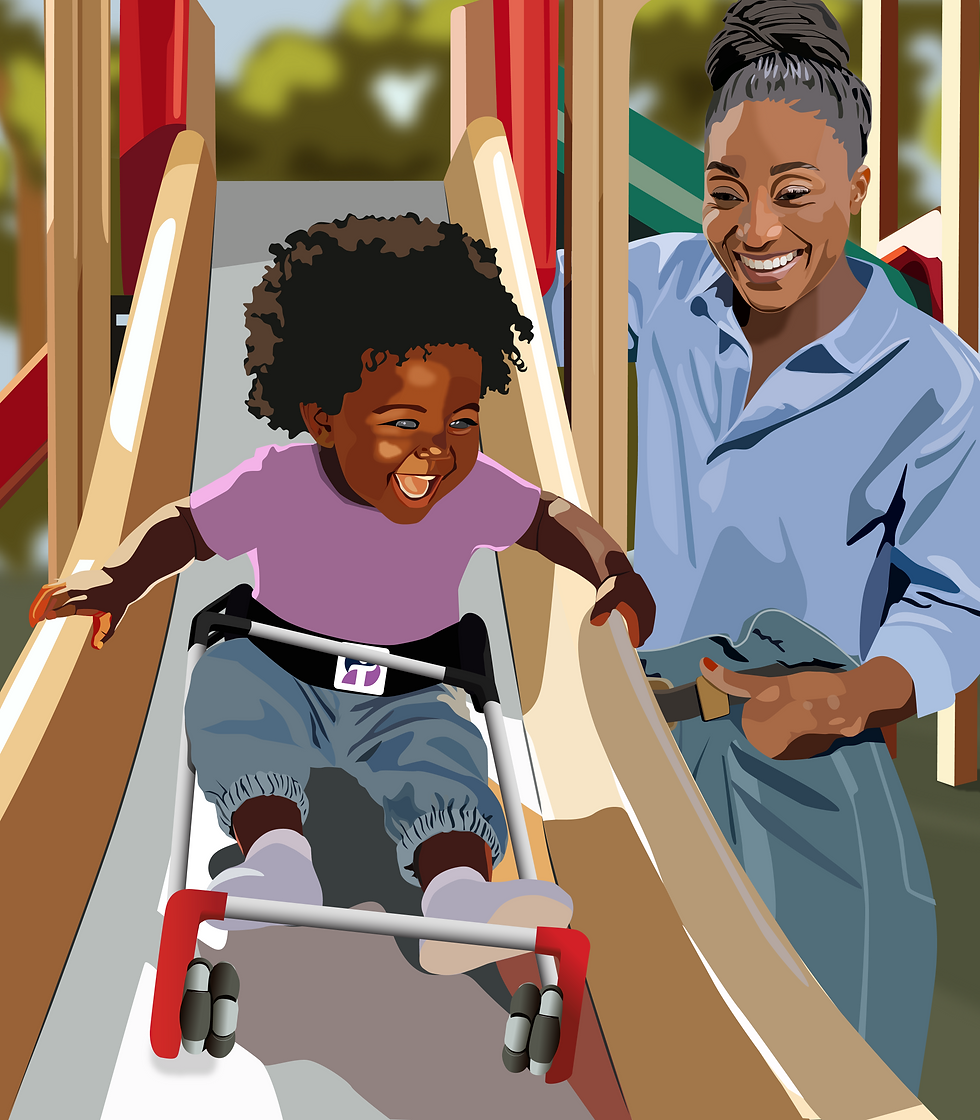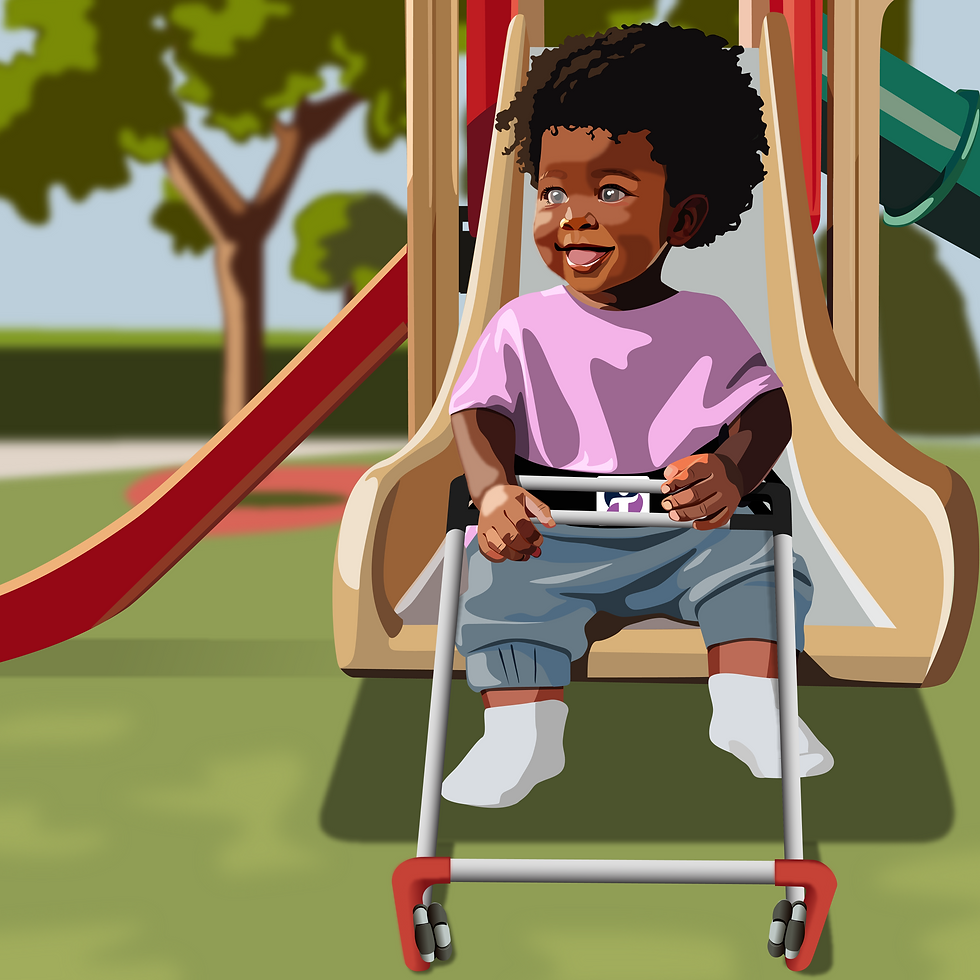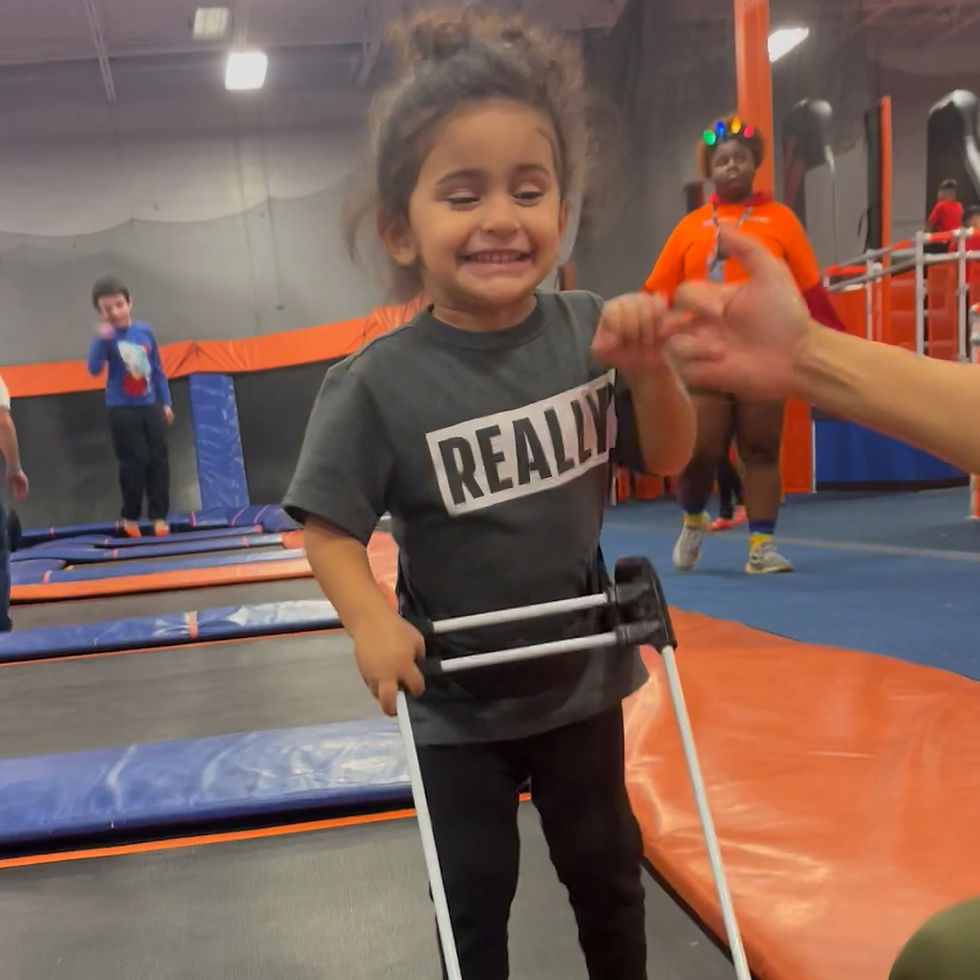🛝 Accessible Play Starts Here: The Pediatric Belt Cane Advantage
- Grace Ambrose-Zaken

- Oct 6
- 3 min read
Playgrounds are more than just fun — they’re spaces where children explore, gain independence, and build confidence. For blind children, however, many playgrounds become intimidating or even off-limits, not because they lack imagination or interest, but because the environment doesn't give them the non-visual feedback they need to play safely and independently.


What Is a Pediatric Belt Cane?
Unlike traditional canes, which require coordination and practice to use effectively, the Pediatric Belt Cane is worn like a belt around the waist. It provides hands-free tactile feedback to blind toddlers and young children — feedback they can't get from their eyes.
It gives children real-time information about their environment: where obstacles are, where the path changes, when a drop-off is ahead, and whether it’s safe to keep moving forward.
On a playground, that information is critical — not just for safety, but for freedom.
🧠 Instant Feedback = Independent Play
A blind child using a Pediatric Belt Cane receives instant, continuous feedback from their environment. Here's what that looks like on a playground:
🎢 Approaching the Slide: The cane lets the child detect when they reach the stairs. They can count how many steps it takes to reach the top, building confidence with each climb.
🛝 At the Top of the Slide: The child gets tactile feedback when the drop-off begins — no guessing, no hesitation. They know when it’s time to go.
🛬 Landing Safely: At the bottom, the cane tells them exactly where the ground is, and whether the path ahead is clear to move forward.
🛷 On the Swings: Even in motion, the child knows if the ground is still beneath them, helping them feel secure and oriented.
🌱 Exploring Surfaces: Is it mulch? Grass? Pavement? A cane tells them when the surface changes and whether there’s a step or curb ahead.
🚧 Detecting Boundaries: Two steps of tactile warning from the Pediatric Belt Cane gives them the power to decide: keep going, turn around, or choose a new direction.

🚸 Why Playgrounds Need to Make Room for the Pediatric Belt Cane
Children who are blind deserve to play just like any other child — not guided from structure to structure, but freely and independently, using their senses and mobility tools to explore, test limits, and have fun.
But here’s the truth: playgrounds that don’t allow or accommodate Pediatric Belt Canes are not truly accessible.
💬 Inclusion doesn’t mean being present. It means having the freedom to participate.
The Pediatric Belt Cane makes that participation possible.

💪 Empowering, Not Limiting
The magic of the Belt Cane isn’t just in the safety it provides — it’s in the confidence it builds.
When a blind child can:
Walk across the playground independently
Climb up a slide without needing a guide
Know when it’s safe to go down
Move around freely without running into obstacles
…they’re not just playing.
They’re learning. Growing. Thriving.
And they’re doing it just like every other child — on their own terms.
✅ Playgrounds + Pediatric Belt Canes = True Accessibility
We wouldn’t expect a child in a wheelchair to leave it behind at the edge of the playground.
So why would we ask a blind child to leave behind their essential mobility tool?
The Pediatric Belt Cane belongs on the playground. It turns confusion into confidence, danger into discovery, and hesitation into independence.

💡 The Takeaway
If you're a parent, educator, or playground designer, it’s time to reframe how we think about accessibility:
Mobility tools aren't barriers to play — they're bridges to it.
Blind children don’t need extra help to have fun — they just need the right tools to move, explore, and belong.
And for young blind kids, there’s no tool more powerful than the Pediatric Belt Cane.
📣 Want to Learn More?
Let us know if you'd like resources, videos, or training guides on how to support blind children using Belt Canes in schools, daycares, or community parks.








Comments